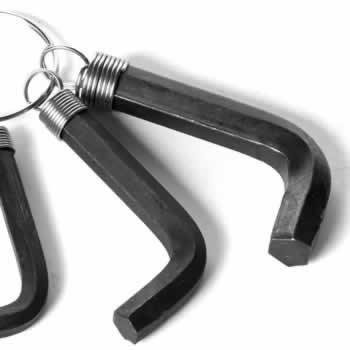Broaching Type Fasteners
In this guide, we will explore the world of these innovative and high-performance fastening solutions. Broaching type fasteners are precision-engineered components that offer exceptional strength, reliability, and versatility for various industrial applications. Designed to provide quick and efficient assembly, these fasteners are favored by engineers and manufacturers worldwide for their superior performance and time-saving benefits.
What are Broaching Type Fasteners?
Broaching type fasteners, also known as broach nuts or broaching nuts, are specialized threaded inserts designed to create strong and durable threads in thin materials. They are commonly used in applications where traditional threading methods are not feasible due to material thickness limitations. Broaching fasteners eliminate the need for tapping or welding, making them ideal for creating load-bearing threads in thin metal sheets, plastic components, and composite materials. The broaching process involves the use of a broaching tool to cut precise, clean threads into the workpiece, resulting in a secure and reliable fastening solution.
Key Features and Benefits
Broaching type fasteners offer a wide range of features and benefits that make them stand out as a preferred choice for engineers and designers. Let's explore some of their key advantages:
- High Strength: Broaching fasteners create threads with exceptional strength and load-bearing capacity, ensuring a secure and reliable connection.
- Versatility: Suitable for use in various materials, including thin metal sheets, plastics, and composite materials.
- Time-Saving: The broaching process allows for quick and efficient assembly, reducing production time and costs.
- Cost-Effective: By eliminating the need for additional hardware or complex threading methods, broaching type fasteners offer a cost-effective fastening solution.
- No Heat Affected Zones: Broaching process does not generate heat, eliminating the risk of heat-related damage to the workpiece.
- Resistant to Vibration: The secure threads formed by broaching fasteners reduce the risk of loosening due to vibration or dynamic loads.
- Space-Saving: The compact design of broaching nuts allows for applications in confined spaces where other fastening methods may not be feasible.
- Consistent and Repeatable: The broaching process ensures consistent thread quality and precise results, even in high-volume production runs.
- Wide Range of Types and Sizes: Broaching fasteners are available in various types, such as hexagonal, round, square, and more, along with a wide range of sizes to accommodate diverse application requirements.
Applications
Broaching type fasteners find extensive use in a wide range of industries and applications. Some common areas where these fasteners excel include:
- Automotive: Used for securing interior panels, dashboard components, and electrical modules.
- Aerospace: Ideal for assembling lightweight structural elements, cabin components, and avionics.
- Electronics: Commonly used in the assembly of electronic devices, such as circuit boards and housings.
- Renewable Energy: Employed in solar panel mounting, wind turbine components, and solar racking systems.
- Sheet Metal Fabrication: Widely used in HVAC systems, appliances, and metal enclosures.
- Marine: Suitable for boat and yacht manufacturing, securing hull components, and interior fittings.
- Furniture and Fixtures: Utilized for joining wood, plastic, or metal elements in furniture and fixtures.
- Medical Devices: Commonly found in medical equipment assembly and surgical instruments.
Installation Process
The installation of broaching type fasteners is a straightforward process that requires a few simple steps:
- Prepare the Workpiece: Ensure that the workpiece material is clean, free of debris, and of appropriate thickness for the chosen broaching fastener.
- Drill or Punch Pilot Hole: Create a pilot hole in the workpiece using a drill or punch, slightly smaller than the diameter of the broaching fastener.
- Align and Insert: Align the broaching fastener with the pilot hole and insert it into the workpiece.
- Apply Pressure: Apply pressure to the broaching fastener while turning it clockwise to engage the broaching tool and cut the threads into the workpiece.
- Check and Test: Verify that the broaching fastener is securely installed by testing its holding capacity and torque resistance.
Quality Assurance and Certifications
Our broaching type fasteners are manufactured to meet stringent quality standards and industry certifications. We are committed to providing products that consistently meet or exceed customer expectations. Our production facilities adhere to ISO 9001 and other relevant quality management systems, ensuring the highest level of quality and reliability in every fastener we produce.
Conclusion
Enhance the versatility and performance of your assemblies with our advanced Broaching Type Fasteners. Whether you need fasteners for precision machining, automotive, or aerospace applications, our selection offers reliable solutions that ensure seamless integration and secure fastening. Experience the efficiency and precision of our broaching type fasteners by exploring our diverse range today.










